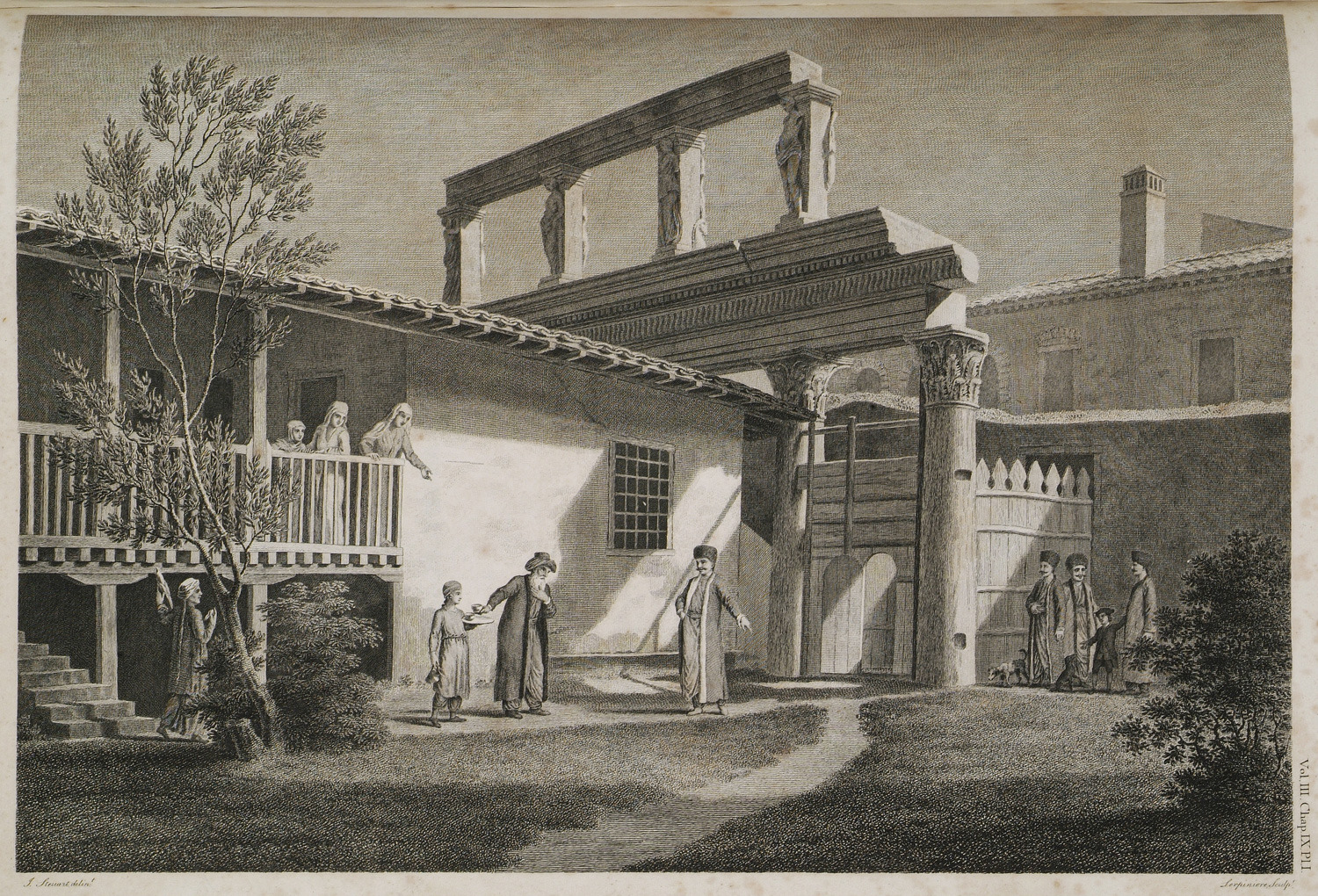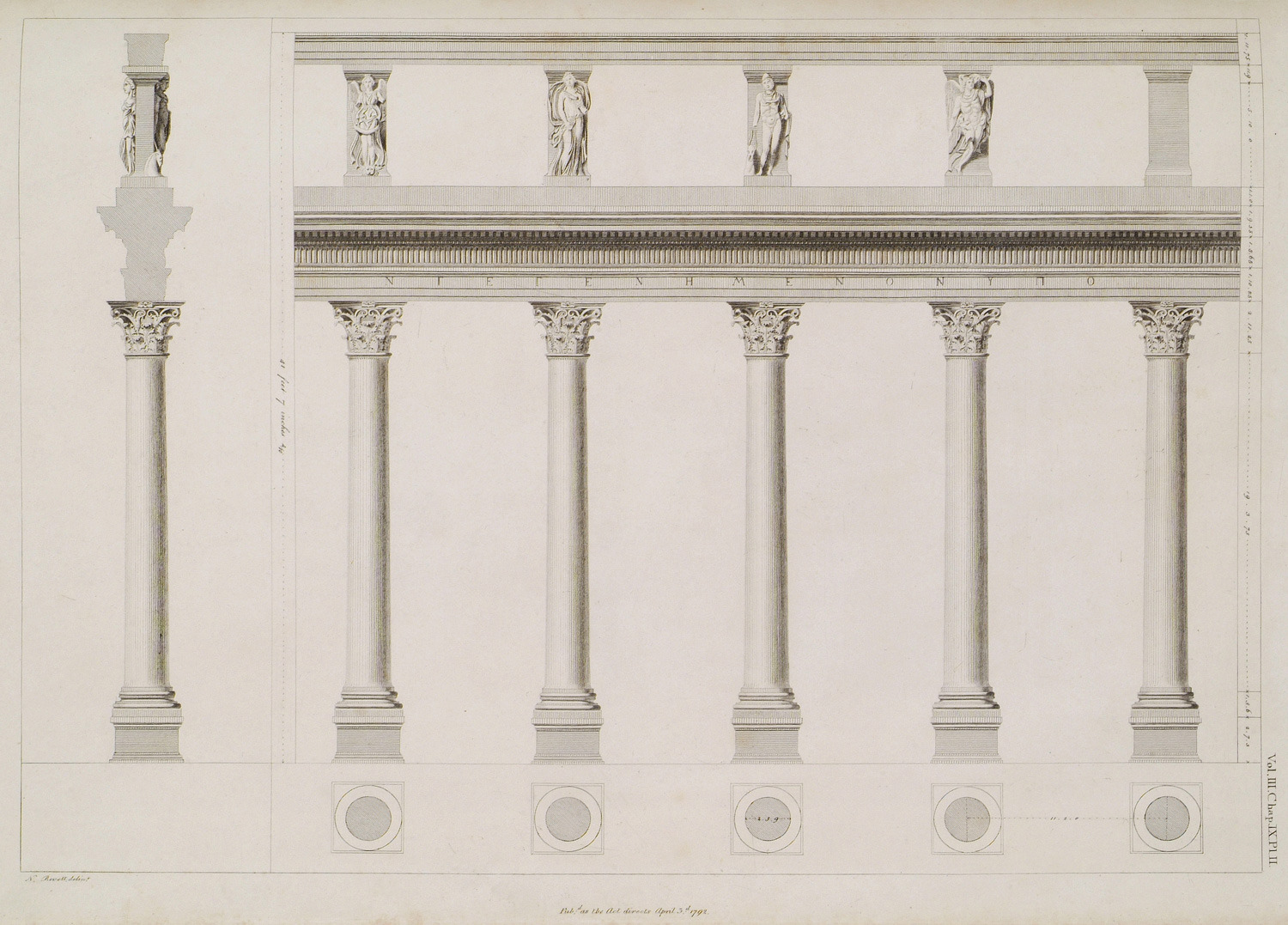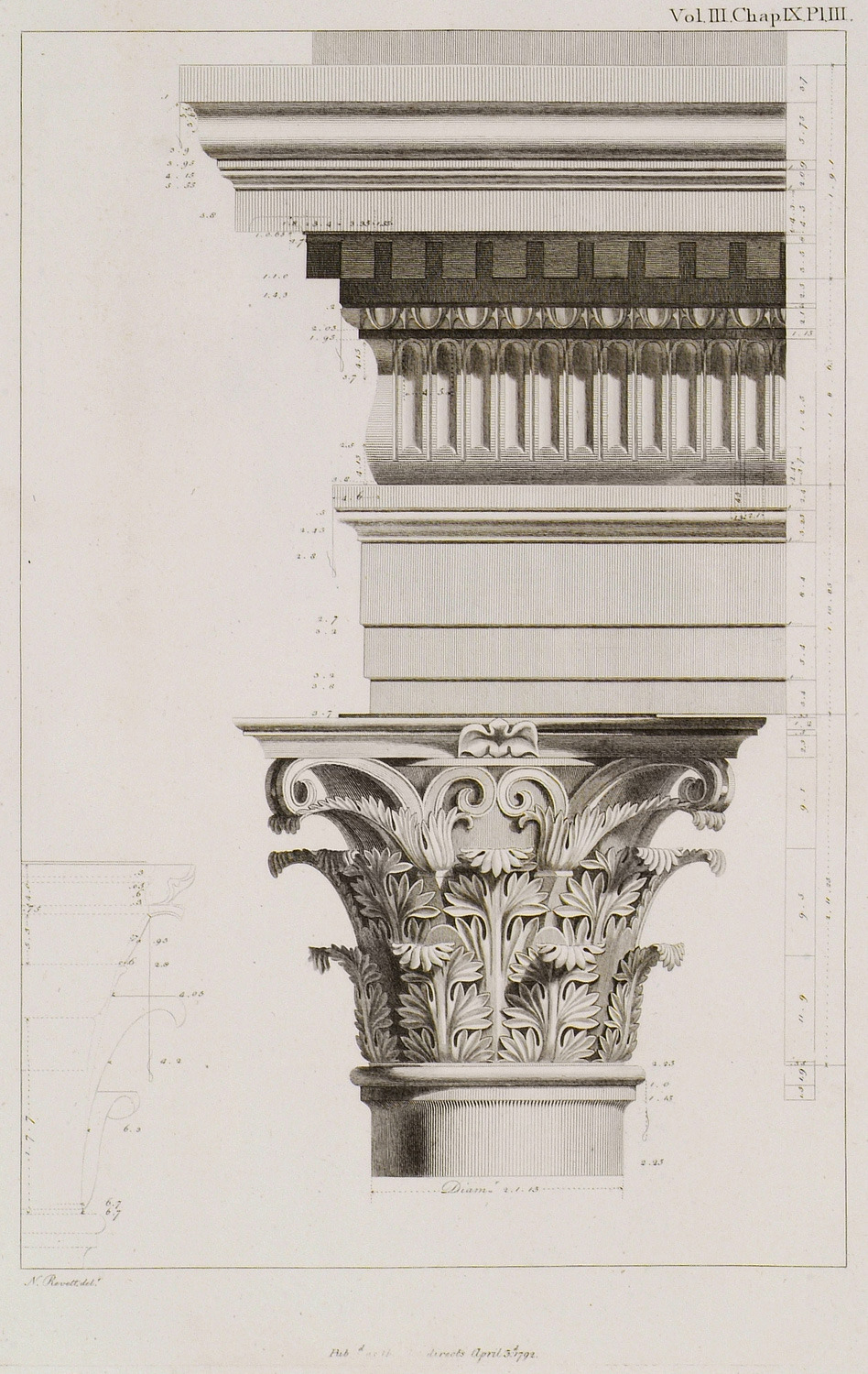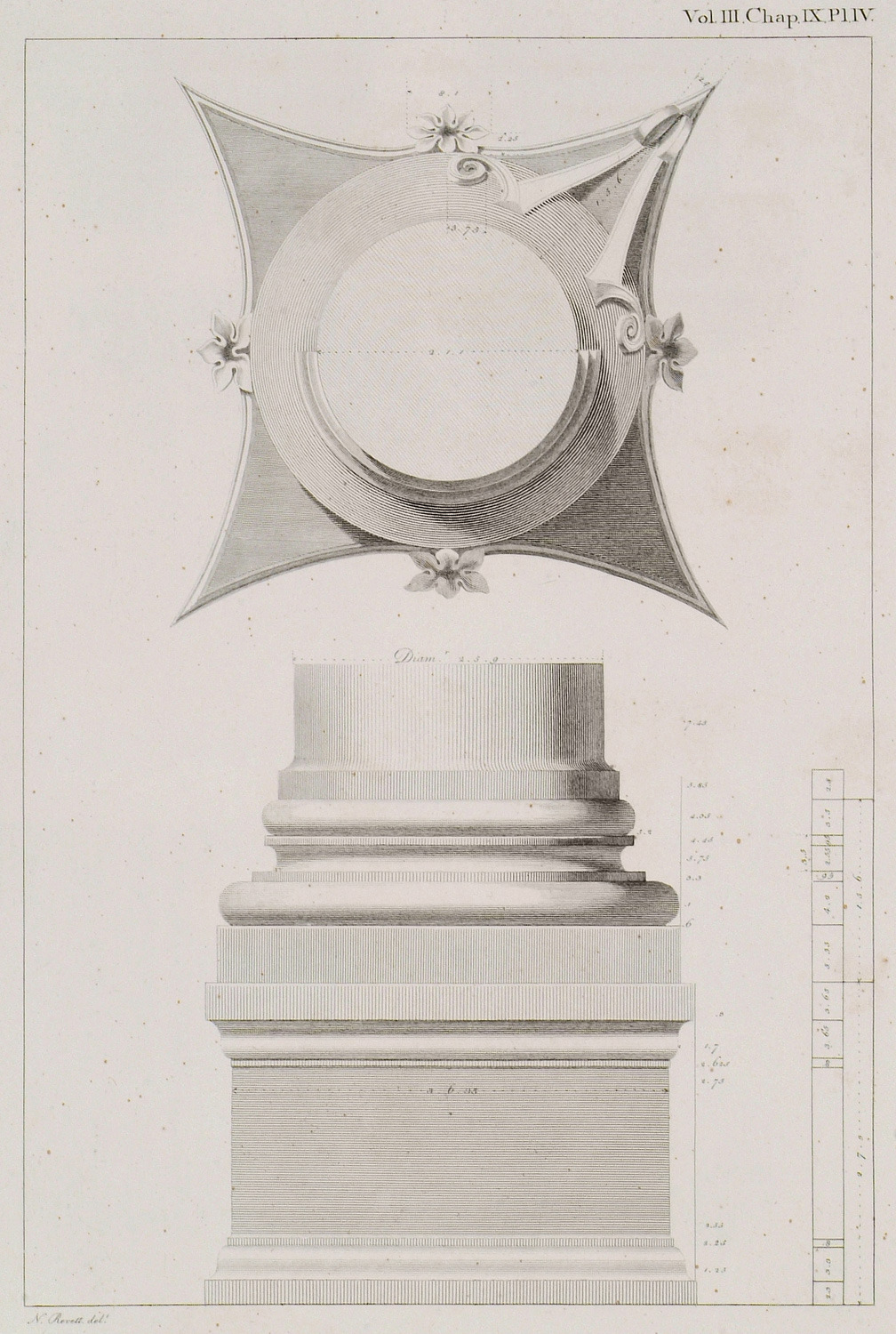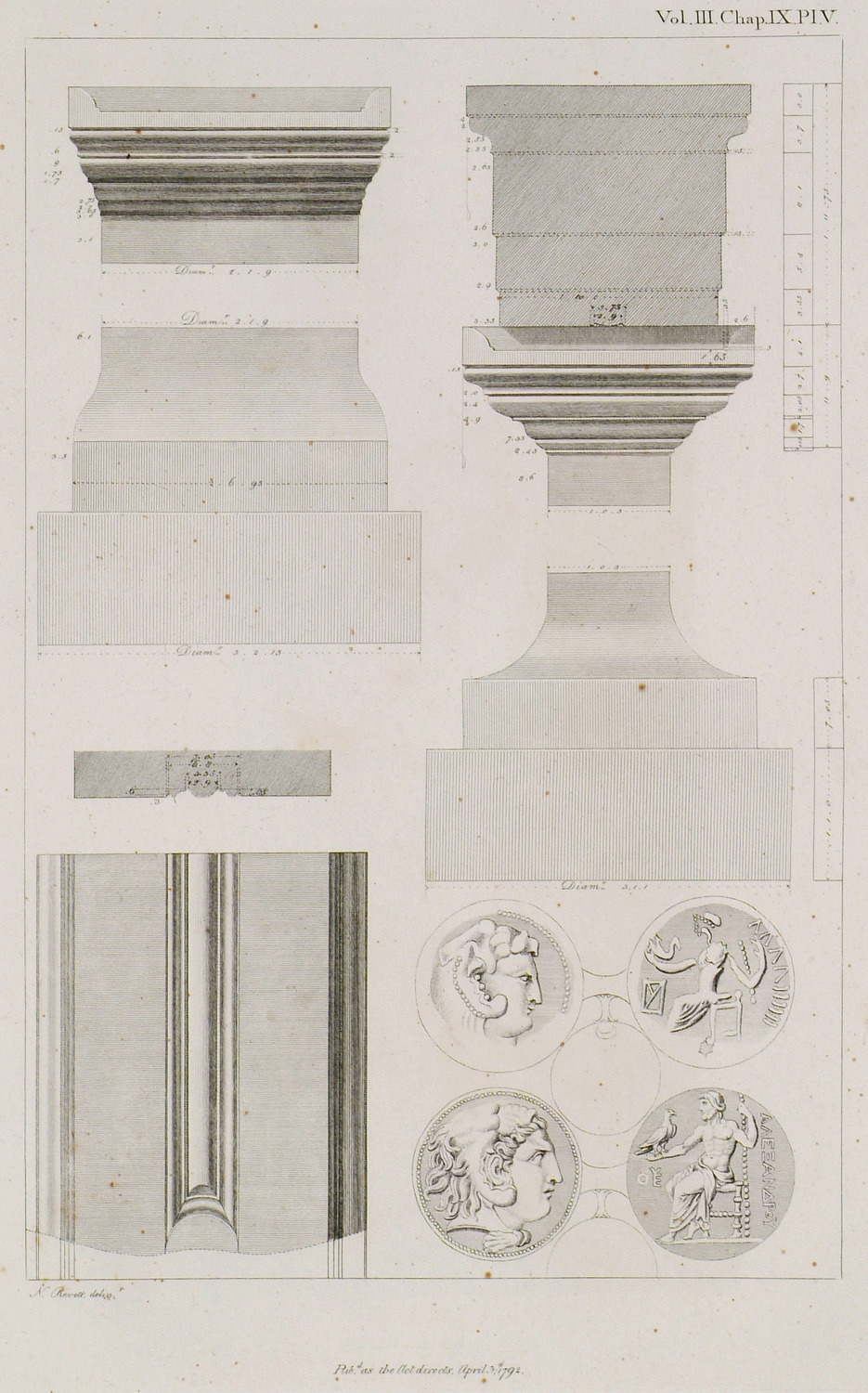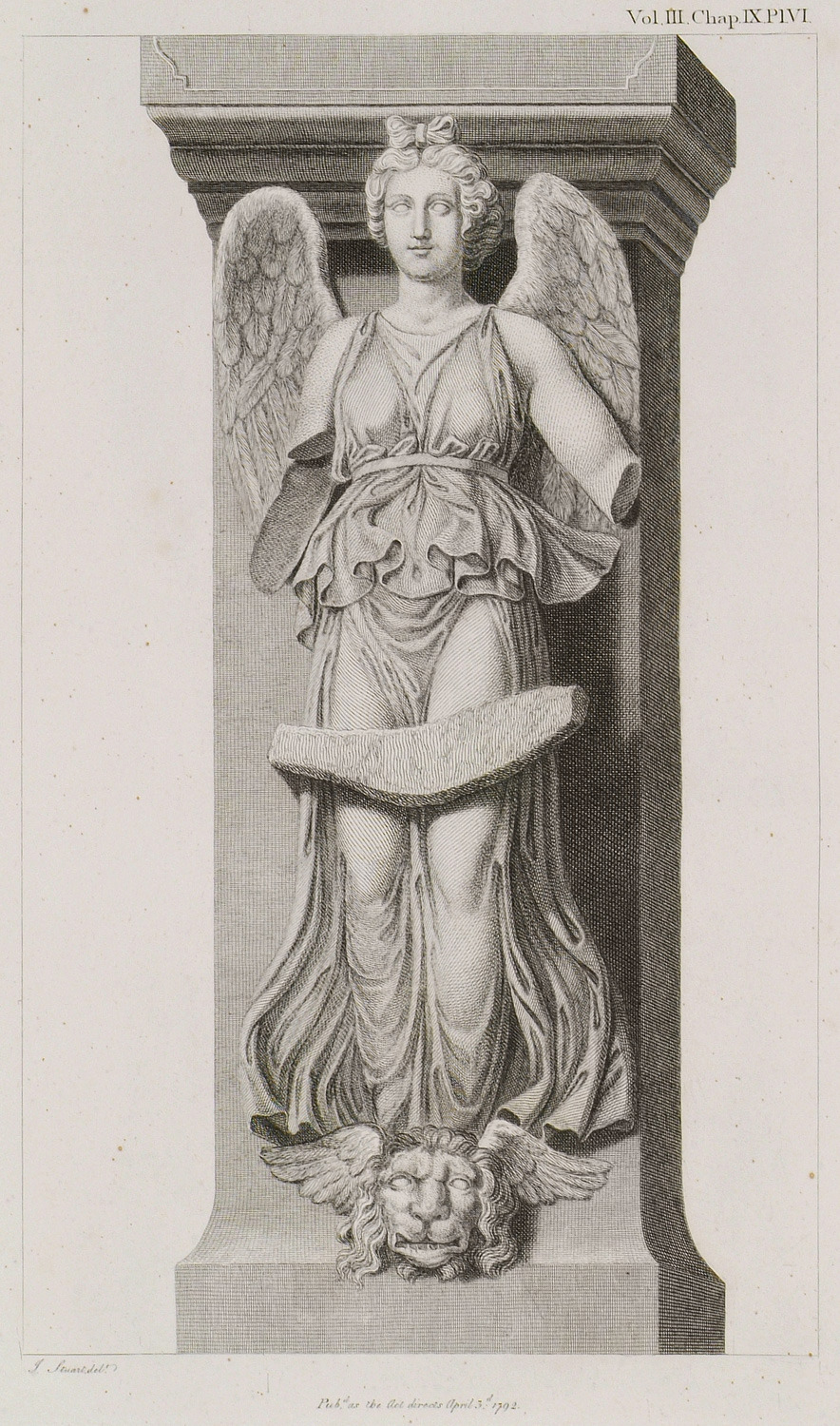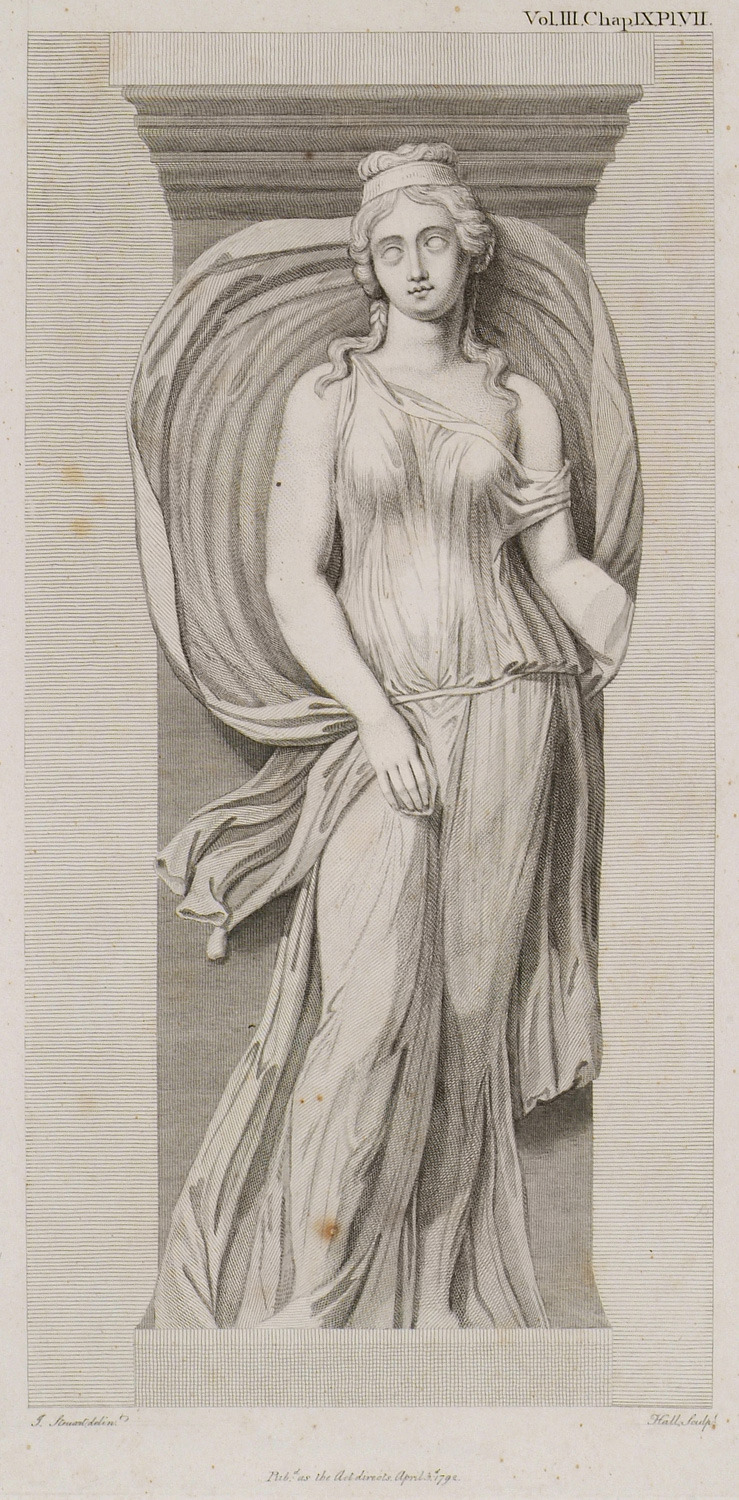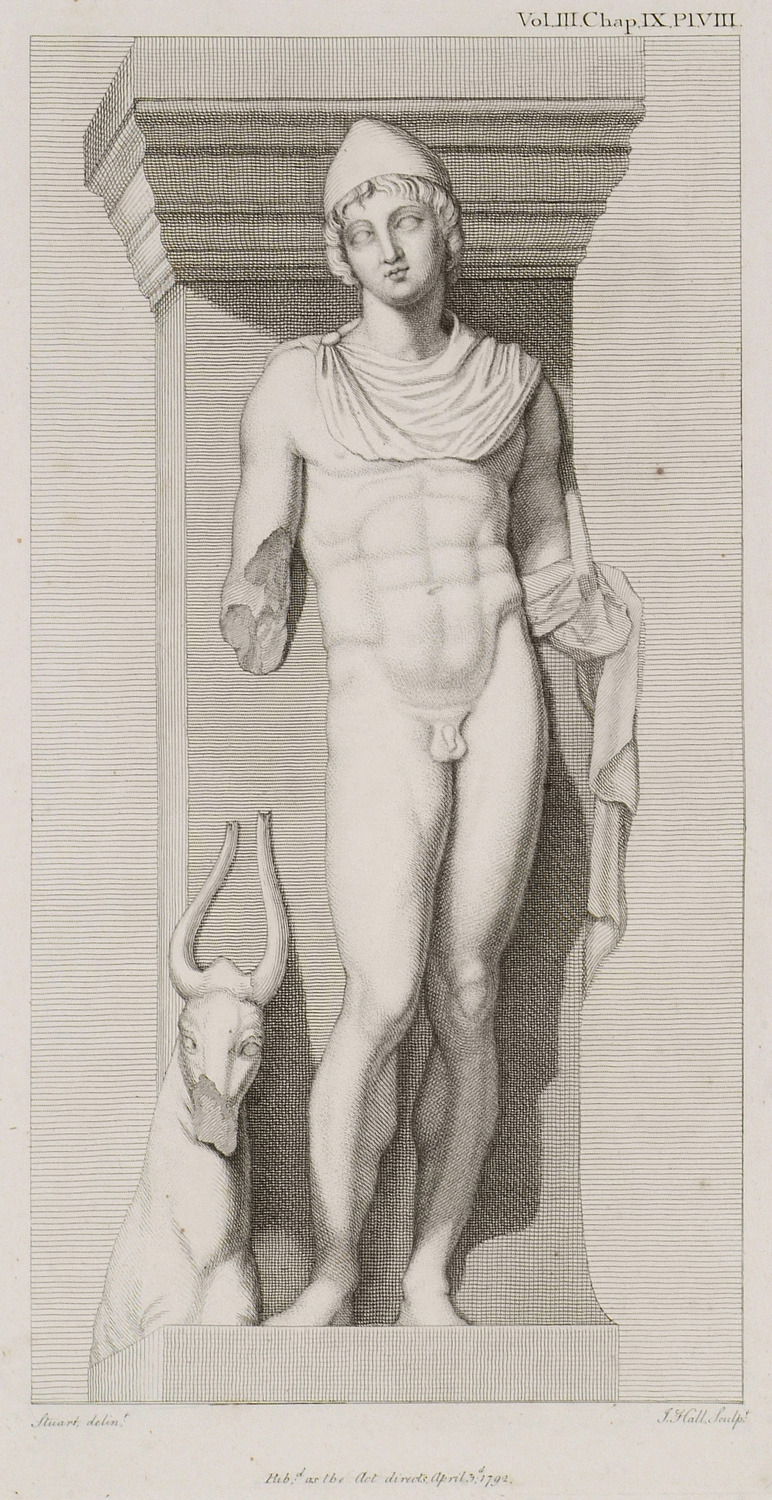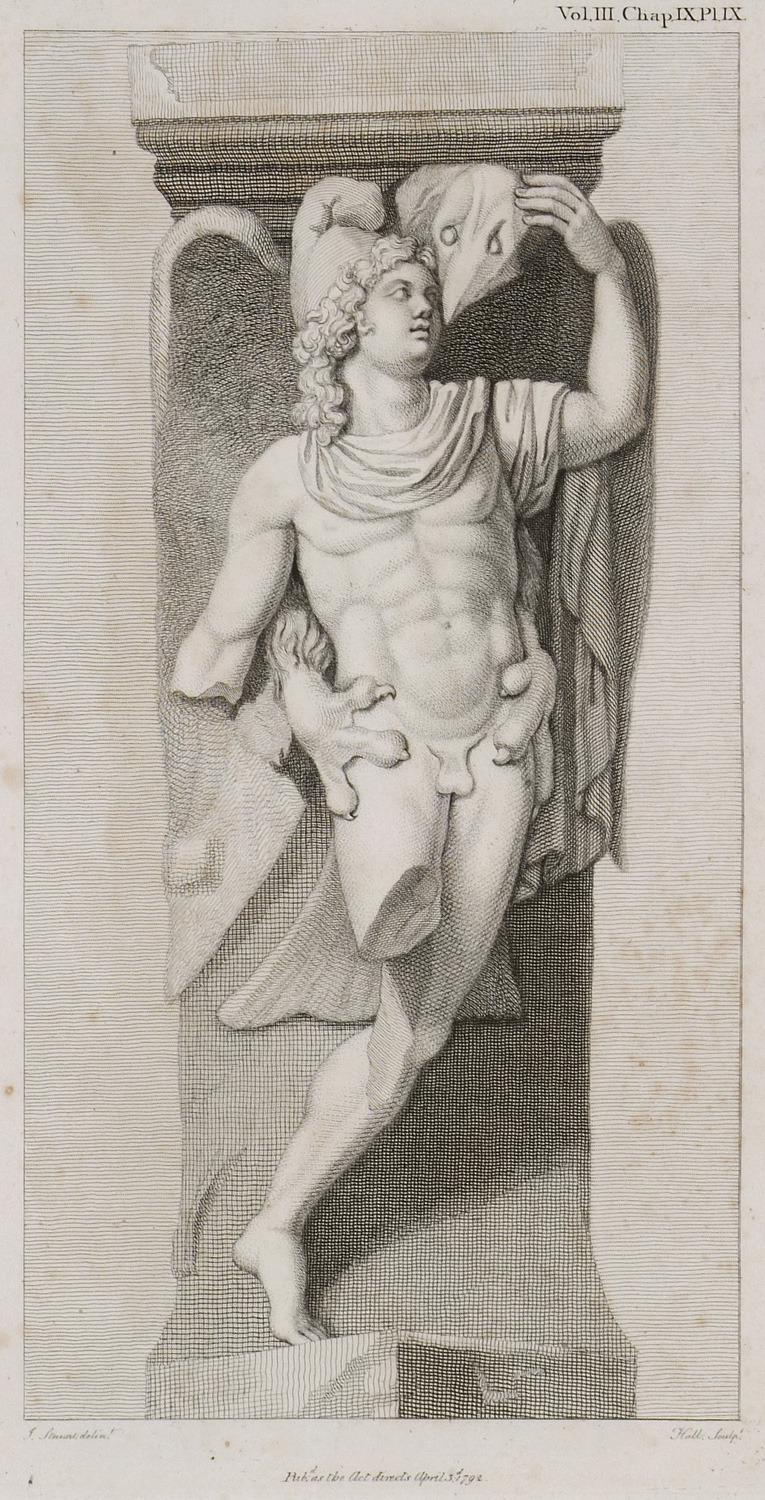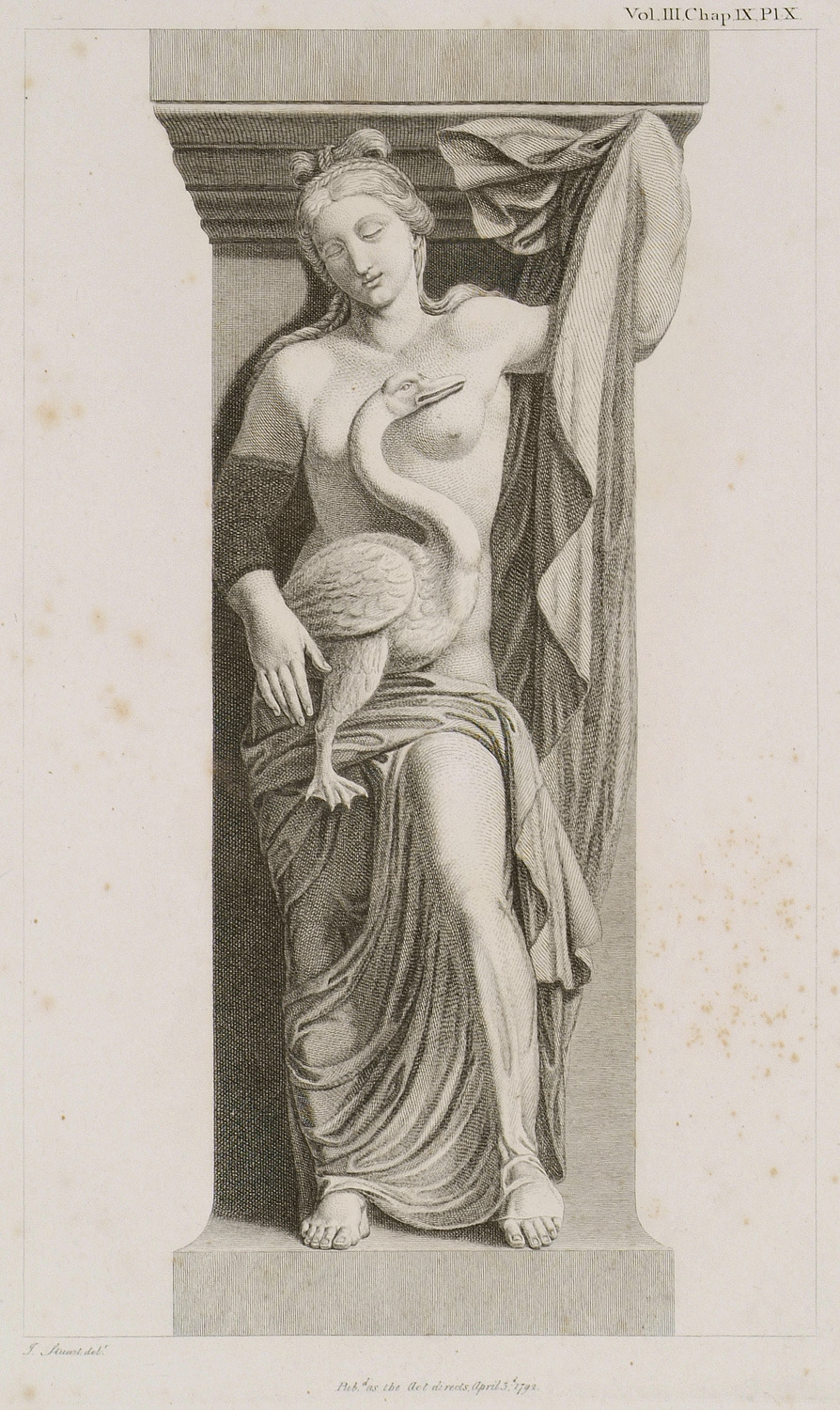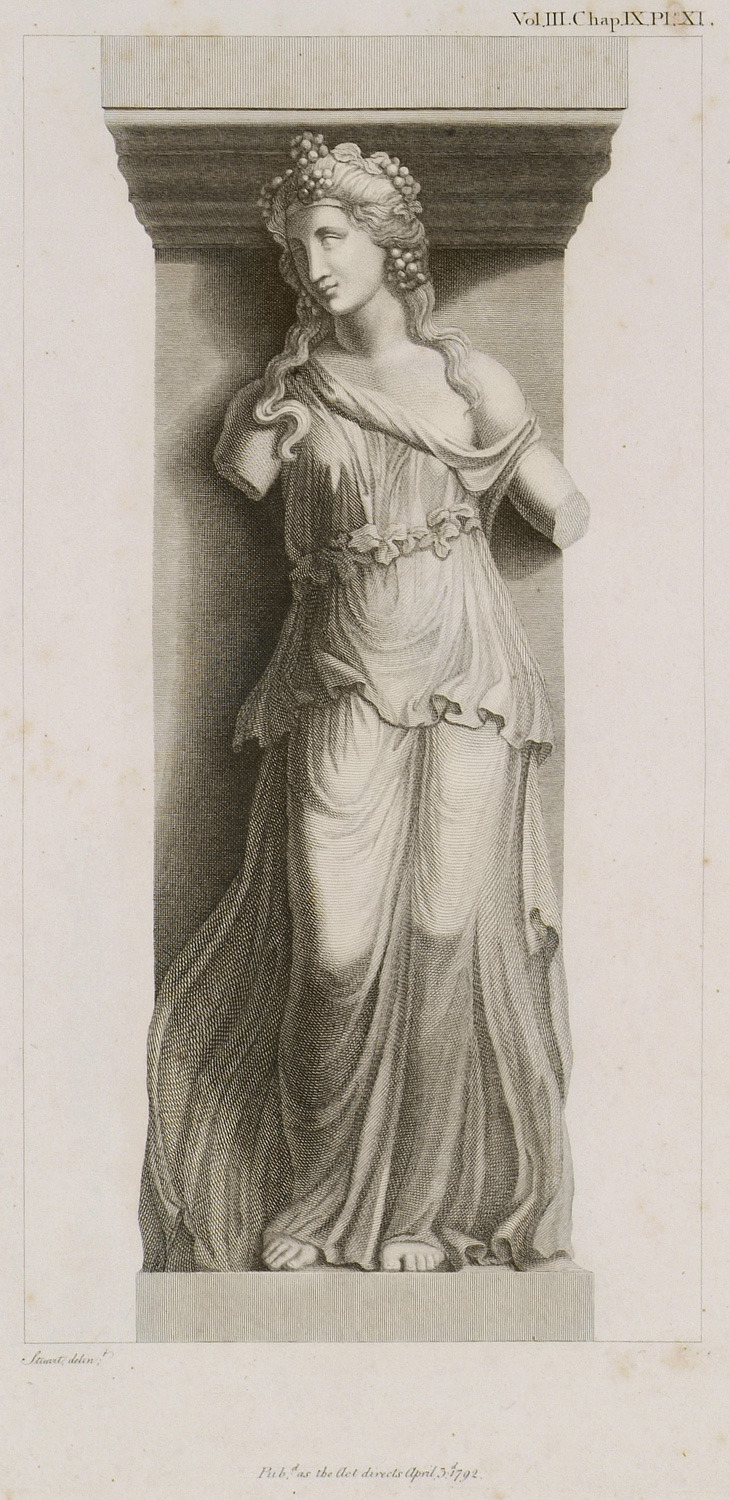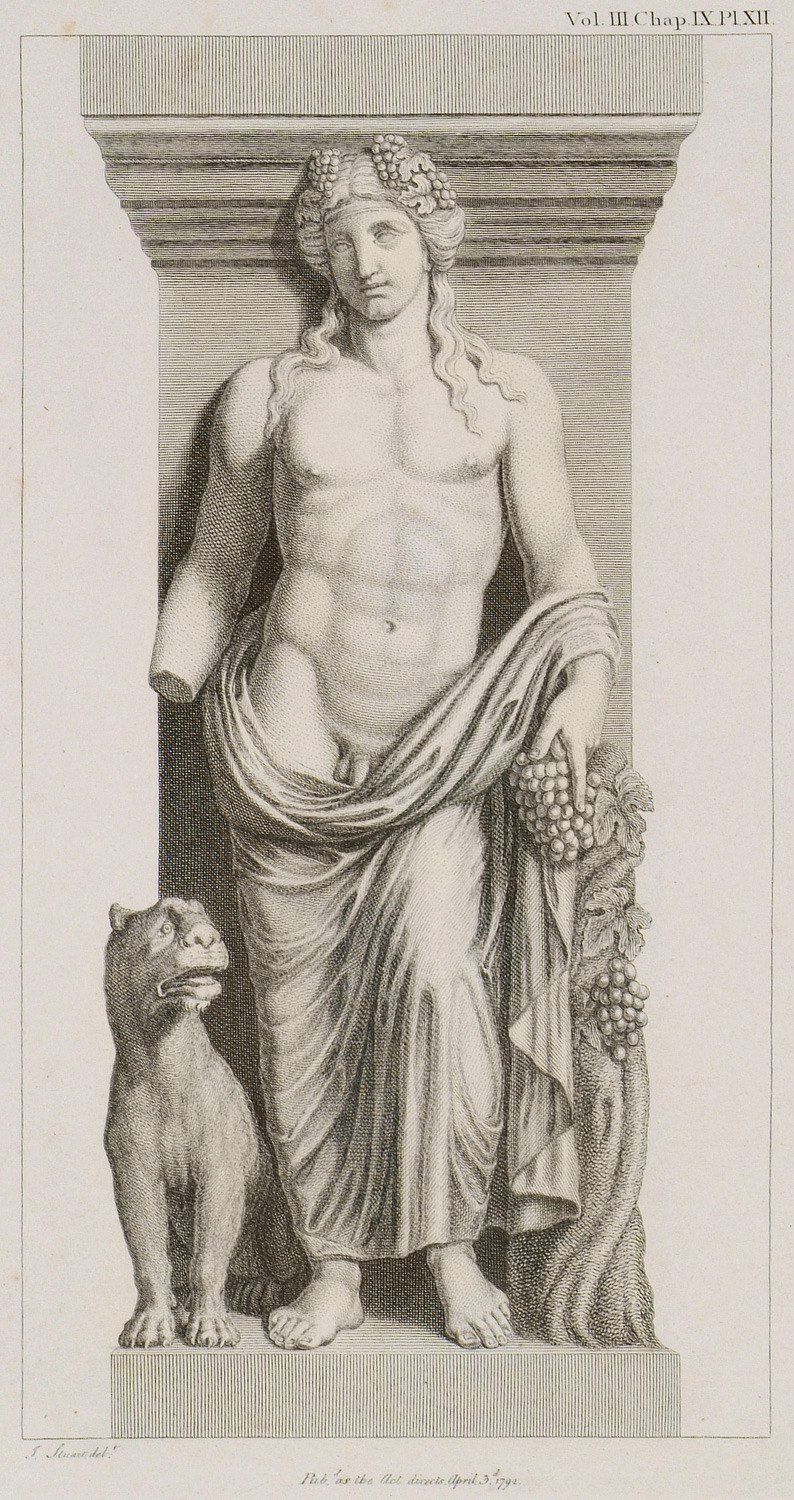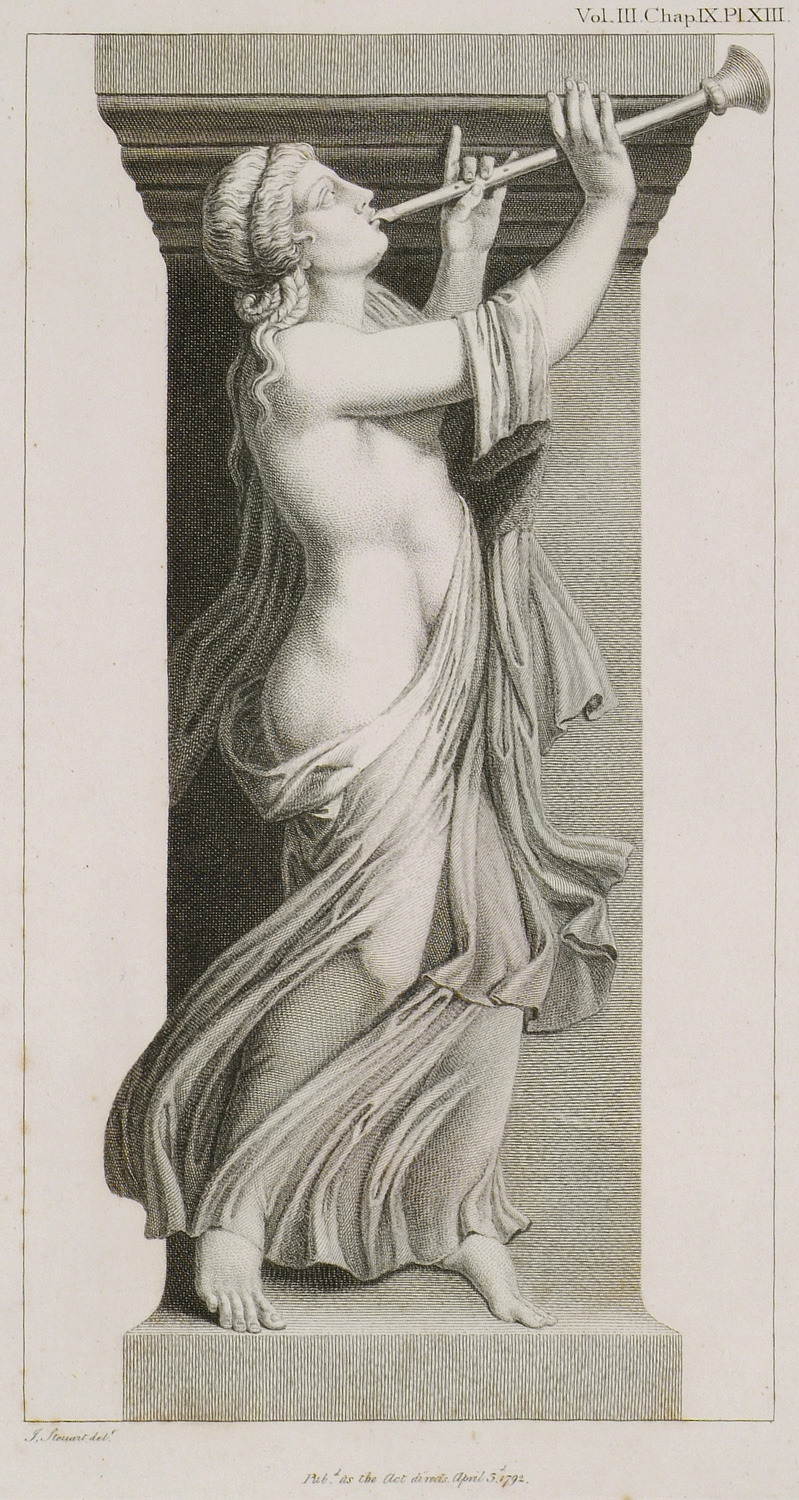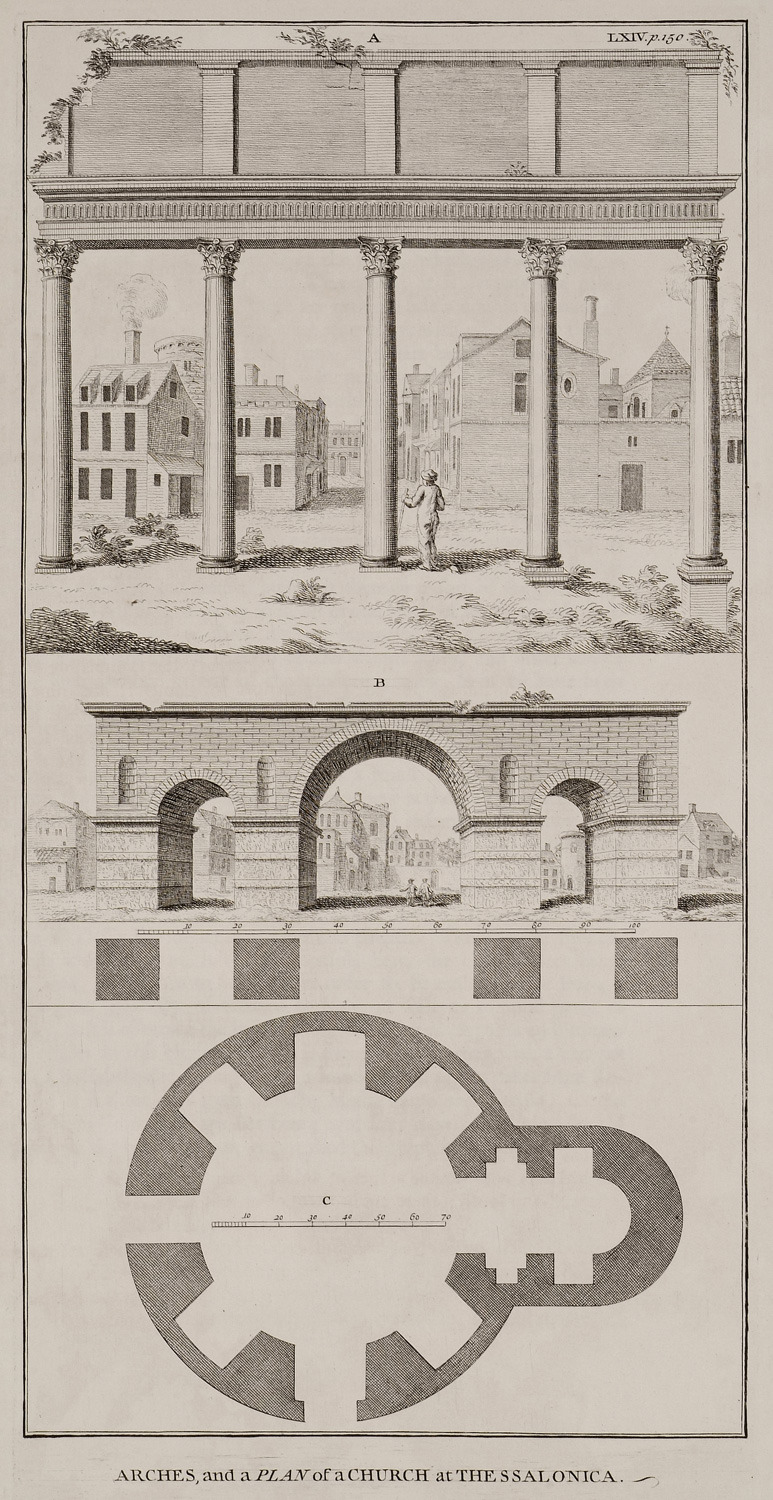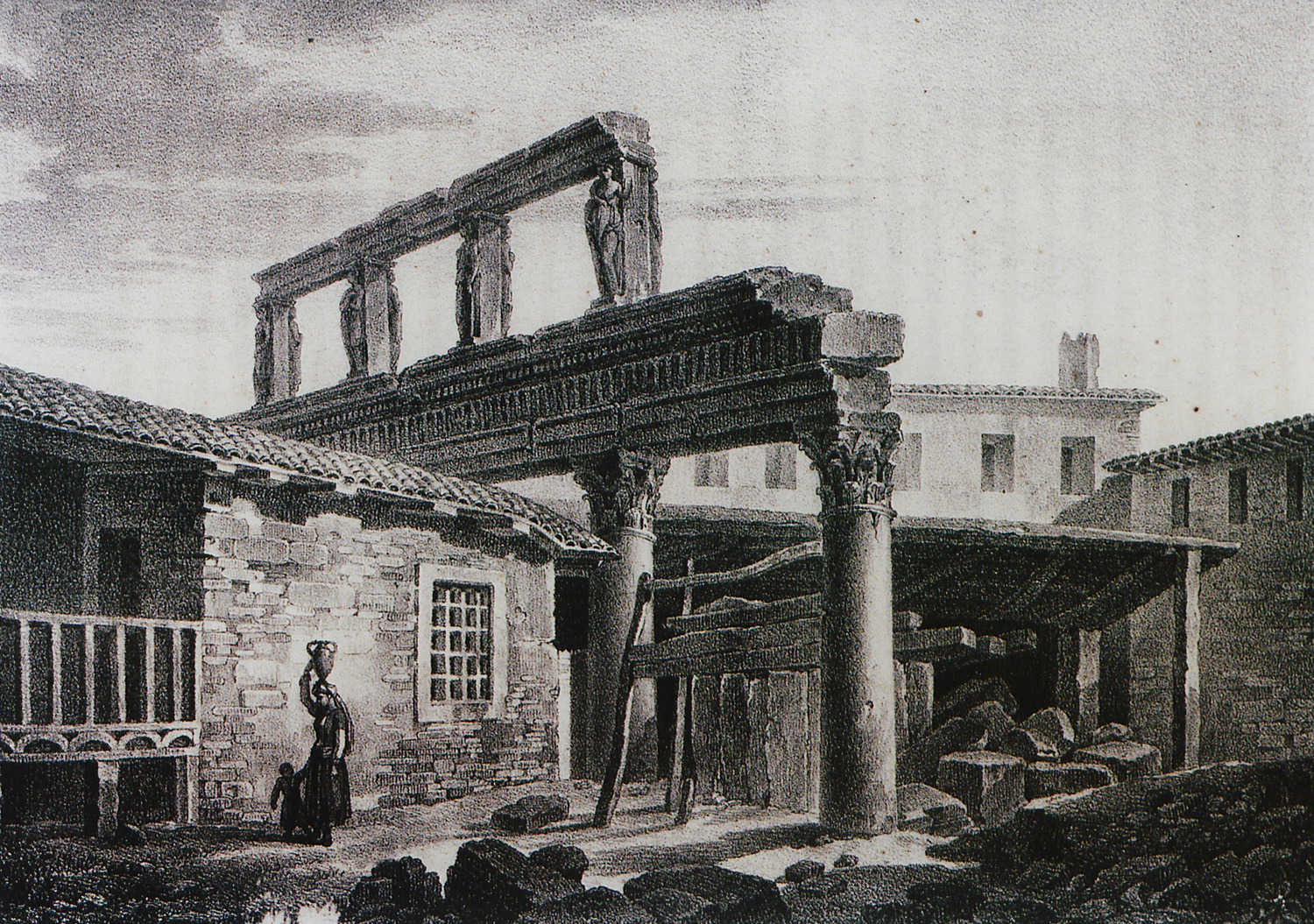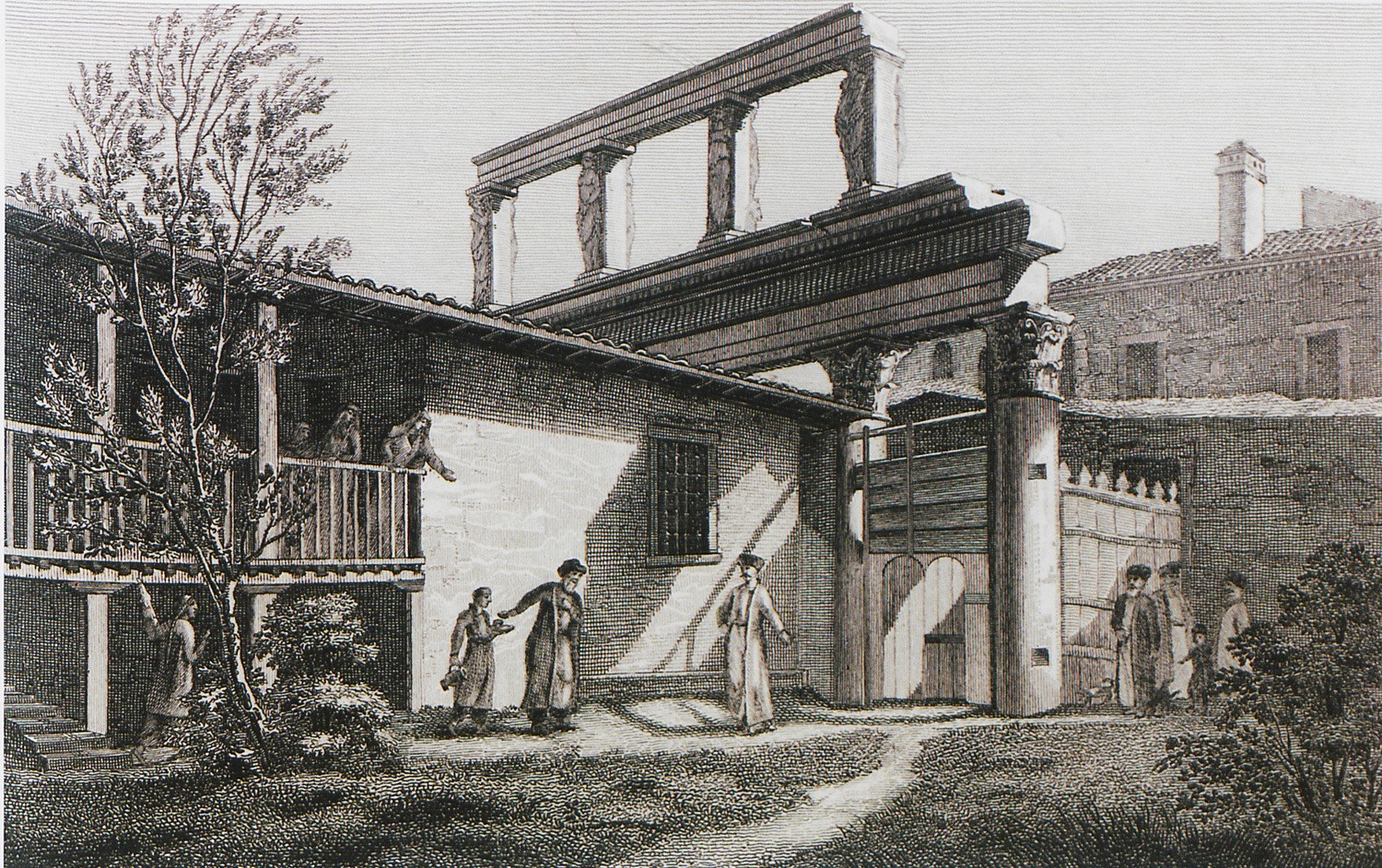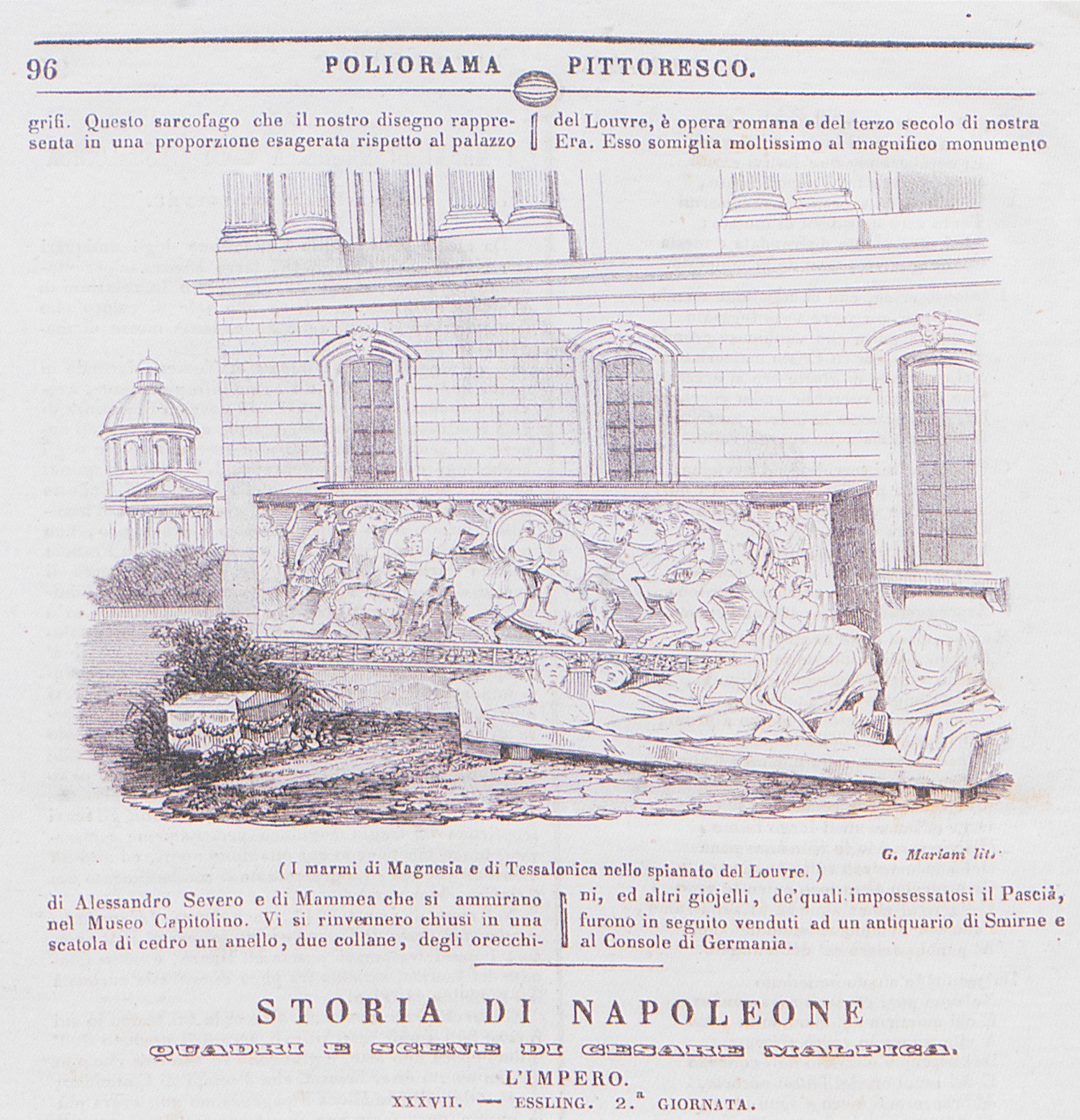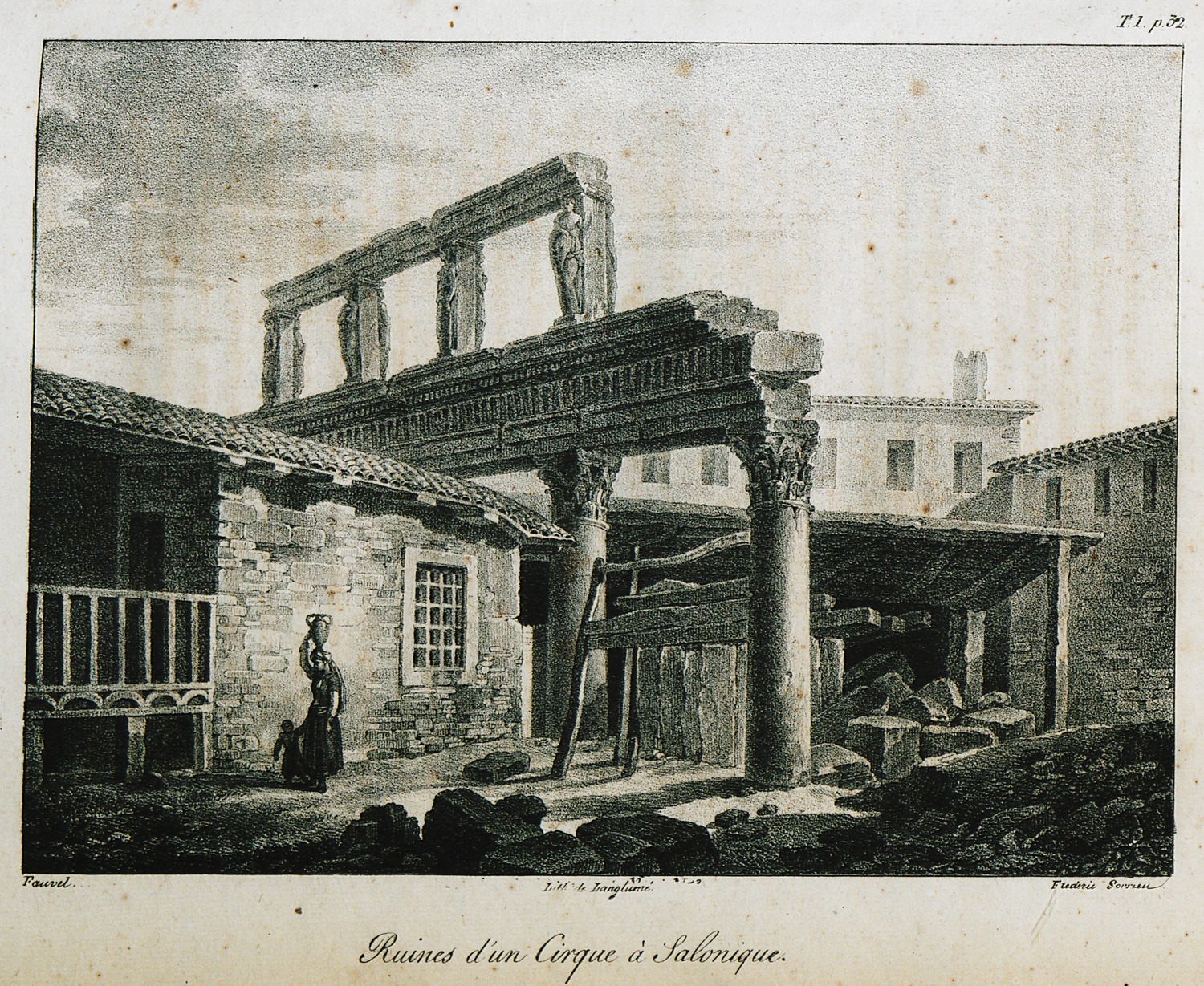Incantadas monument (Thessaloniki) (18 Subjects)
View of the sculptures of the now lost Incantadas monument at the southern entrance of the Roman Agora of Thessaloniki. The sculptures were incorporated in the house of a family of Sephardi Jewish merchants. British consul Paradise, who has come to show John Stuart and Nicholas Revett the monument, meets the owner of the house. A young servant offers the consul a cup of coffee while from above the owner's wife reprimands her husband for not having invited the consul to sit before offering him coffee. On the left, a woman who is spinning approaches the travellers. On the right, Stuart and Revett with the young son of the British consul, who is escorted by the consul's dragoman (interpreter).
The now lost Incantadas monument, Thessaloniki: Plan, elevation and section.
The now lost Incantadas monument, Thessaloniki: The capital and entablature.
The now lost Incantadas monument, Thessaloniki: Pedestal, base and plan reversed of the capital.
The now lost Incantadas monument, Thessaloniki: Moulding of the Attic, and two Macedonian medals of the same device; one barbarous, the other elegant work.
The now lost Incantadas monument, Thessaloniki: A figure representing Victory. [Lion's head added by Revett).
Aura, from the now lost Incantadas monument, Thessaloniki.
Dioscorus from the now lost Incantadas monument, Thessaloniki.
Ganymedes from the now lost Incantadas monument, Thessaloniki.
Leda from the now lost Incantadas monument, Thessaloniki.
Ariadne from the now lost Incantadas monument, Thessaloniki.
Dionysus with panther from the now lost Incantadas monument, Thessaloniki.
Maenad from the now lost Incantadas monument, Thessaloniki.
View of the sculptures of the south entrance of the Roman Agora in Thessaloniki (Incantadas monument). View and plan of the triumphal Arch of Galerius (Kamara). Plan of the Rotonda in Thessaloniki.
View of Incantadas monument in the Roman agora of Thessaloniki. E. M. Cousinéry, Voyage dans la Macédoine, Paris, 1831.
View of Incantadas monument in the Roman agora of Thessaloniki, based on earlier drawing from the edition by James Stuart and Nicholas Revett. Lithograph, c. 1830.
Reliefs from Magnesia and Thessaloniki at the court of Louvre Museum. From Poliorama Pittoresco review, 1843.
View of the sculptures at the southern entrance to the Roman Agora of Thessaloniki (Incantadas Monument).


